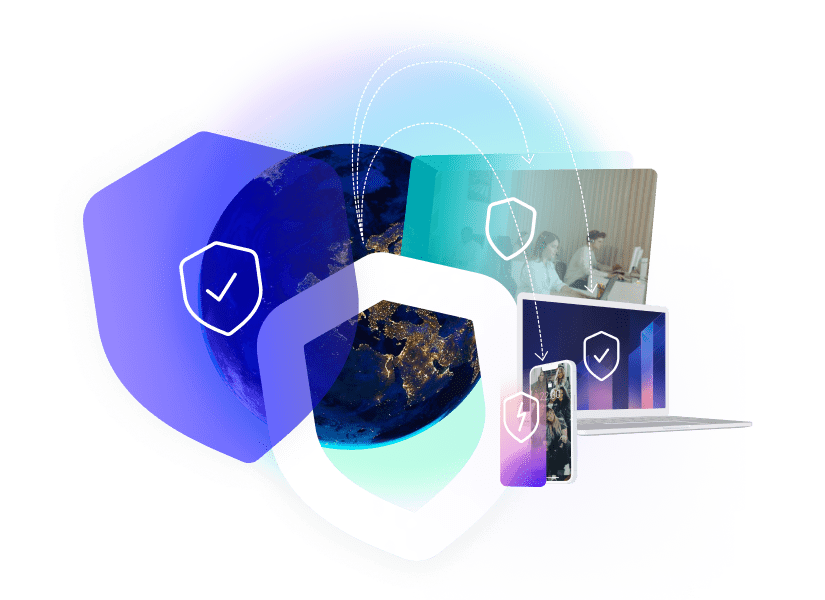Immunity DNS4GOV
Centralized protection
for all public institutions
- Protect all of your critical infrastructure under one shield – hospitals, schools, government offices, municipalities…
- Prevent data theft, ransomware, database leaks, and service outage
- No demands for local IT team’s time or special hardware
DNS4GOV is a government-oriented initiative to implement large-scale protection for government and public institutions and their employees – mainly ministries, local governments, municipalities, healthcare, and educational sector.
CENTRALIZED PROTECTION
Why is centralized protection the most effective way
Centrally provided protection takes the burden away from the local IT teams and budgets and allows the institutions to get the highest level of protection available.


The only way to ensure mass adoption
Instead of management of individual projects, a national cybersecurity authority can simply allow any institution to join


No demands for the local IT teams
Local admins need no budget, special hardware, and expertise – they can protect their whole network in under 2 hours


Cover the blind spots of local security
DNS security and local threat intelligence gathered by CERTs provide unique-in-the-market combination of protective measures


The highest privacy standard approved by the European Commission
DNS4GOV started within the European Commission’s initiative to build a protective DNS service for the public and governments (DNS4EU)


New standard in national security
Led by the successful implementations in UK, Canada, Australia, and now the EU, nation-wide security is becoming a trend for progressive countries.


Smooth project in high-demand by the public
Cybersecurity is an increasingly important topic for the public, and thanks to DNS4GOV being implemented in 3–6 months, it can mean an important win in this exposed area.
How protective DNS works
DNS4GOV uses a protective DNS resolver to filter malicious traffic, effectively stopping a wide range of attacks before they can do any damage. Thanks to working on a DNS level, the only thing the IT team of an institution needs to do is to redirect the DNS traffic of their whole network to the DNS4GOV resolver.
This way, any device in the network (or any device with the Home Office app) is immediately protected, including cell phones and IoT devices such as routers, printers, and medical appliances, which are hard or impossible to protect with other solutions.
Moreover, DNS4GOV provides numerous additional features, such as monitoring of leaked credentials, homograph attack alerts, DNS tunneling and C&C traffic monitoring, and more.
DNS4GOV is connected to DNS4EU threat intelligence exchange ecosystem which enables sharing regional threat intelligence with CERTS in real-time, raising accuracy and detection capability of localized attacks. Basically, if any threat is identified by any member of the ecosystem, it is instantly propagated into the protection of all institutions protected by DNS4GOV.
How is DNS4GOV implemented?

The local authority, such as the National Cyber Security Centre, handles the project, administration, and budget.
In 3–6 months, DNS4GOV can be ready for deployment on national level.
They can allow any institution to redirect their DNS traffic to the DNS4GOV resolver, thus gaining the protection. The resolver can be deployed in cloud for the easiest implementation, or on-premise for deeper insight into the network (but even the on-premise version requires no special hardware and can usually be set-up under 2 hours).
The national authority can allow other institutions to include their subsidiaries into DNS4GOV, making it easier to protect whole branches of public infrastructure.
Join the DNS4EU ecosystem
If your country is an EU member state, DNS4GOV brings additional value thanks to the DNS4EU ecosystem.
The official DNS resolver for the EU
Whalebone-led consortium is a sole developer of DNS4EU, the official EU DNS resolver guaranteeing security and data privacy
Abide by the highest standards
This is because Whalebone’s consortium was the only one to fulfill the technical, security, and privacy requirements of the European Commission
EU-specific threat intelligence
Thanks to DNS4EU, DNS4GOV operates with unprecedented database of threat intelligence data from governments, CERTs, telcos, ISPs, and other actors within DNS4EU
Together for safer Europe
Your country can become a part of the cybersecurity ecosystem which focuses on threats targeting EU countries
Tailored for the government use-cases
Ransomware attacks
These attacks cripple crucial infrastructure, still there is only ~20% chance of getting data back after paying the ransom
Strategic data exfiltration
Using elusive techniques such as DNS tunneling to get access and steal secret information
Phishing and scams
Trying to get access to a pre-selected institutions’ databases to steal sensitive data
Abusing insufficient security of public institutions
Selecting public institutions, such as schools, as an easy target



